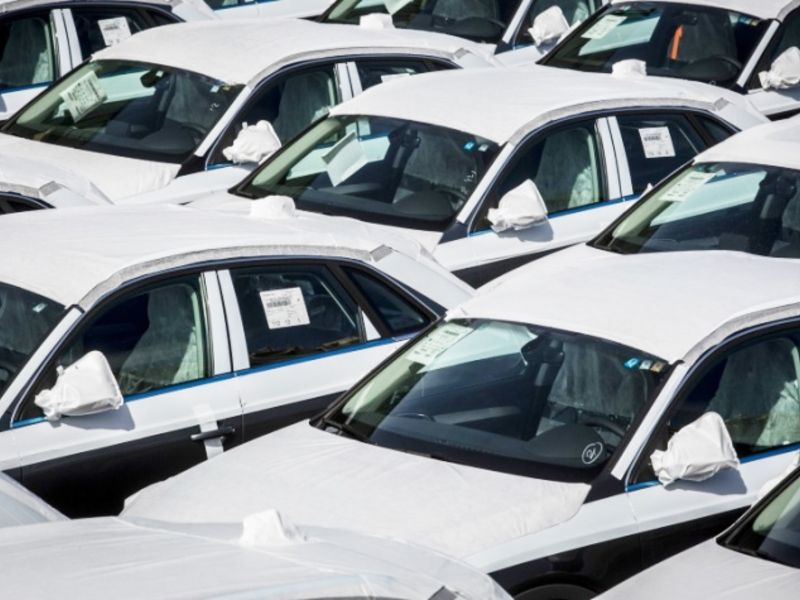
After uncorking a flurry of discounts when the economy was cratering, automakers are going back to the drawing board on their incentive strategies as demand rebounds and some dealers’ inventory shrinks to historic lows.
Arnaldo Bomnin’s two Chevrolet stores in Miami were on track for a record May, but he worried that short supplies of some models could hamstring sales.
“I’ve been selling Chevys for 20 years, and I’ve never seen the levels of inventory that we have right now,” Bomnin said.
As vehicle production ramps up after a two-month shutdown, automakers will reassess incentive programs that largely expire June 1. Analysts expect automakers, heading into the summer selling season, to shift their focus to cash rebates and discounts targeted to specific models and regions with sufficient inventory while backing off the wide-ranging financing deals that helped sell pickups and SUVs in April and May.
Bomnin’s stock of the Chevy Equinox, Trax and Blazer crossovers should last through mid-June, but other utilities and pickups are scarce. “Core inventory is the problem,” Bomnin said. “If we keep the pace, we may run out of inventory by the end of this month.”
Even without incentives, analysts say, there is plenty of natural demand in the retail market again.
“The way that the COVID economic impact has hit the population has been disproportionate,” said Eric Lyman, chief industry analyst at vehicle listings site TrueCar. “It hasn’t impacted the group of buyers that are commonly found in new-vehicle sales and late-model [used]-vehicle sales.”
TrueCar’s search traffic and purchase intent returned to pre-virus levels in the last two weeks of April and continued to increase going into Memorial Day weekend.
“The automakers are starting to see … because we don’t have the production backfilling inventory at the dealers’ lots, we may have a situation where our incentives were too generous,” Lyman said. For example, Kia doesn’t need to incentivize the quick-turning Telluride as much as the widely available Sorento, he said.
Even automakers that don’t typically offer generous incentives stepped up their spending this spring. Non-Detroit 3 automakers have increased the value of incentive programs by nearly $1,000 per vehicle, or 40 percent, since early March, said Tyson Jominy, vice president of data and analytics for J.D. Power.
“There’s a lot of uncertainty,” he said. “How long we can keep the recovery going, and what it’s going to take to do it? So everyone is generally spending more now than this time last year and, in many cases, than they’ve ever spent.”
After Memorial Day and the last weekend of May, automakers should have a better idea of market demand and their own supply, Jominy said.
J.D. Power forecasts May U.S. retail sales will be 15 to 23 percent lower than in May 2019, an improvement over earlier forecasts.
But the aggressive incentives responsible for avoiding a bigger decline are expensive to maintain. Automakers subventing interest rates spent an average of $5,700 per finance contract in mid-May, according to J.D. Power. That’s down from $7,100 in early April but up from $4,000 before the coronavirus affected the market.
Cash offers could be a less expensive alternative for automakers. “It’s a very powerful lever, but one that the industry hasn’t really used so far,” Jominy said. Even if automakers run a $4,000 cash offer, they would lower their average spend and improve profitability, he added.
“You’re starting to see a little more strategy being implemented with how those incentives are being deployed,” Lyman said.
Areas where businesses and consumers are under looser restrictions may not need as many incentives to motivate potential buyers. Those markets are increasingly tight on inventory, especially pickups, while markets under stricter shutdowns still have adequate supply, Jominy said. “But on average in the nation, pickup trucks are becoming very scarce,” he said.
New-vehicle inventory plunged to fewer than 3.3 million vehicles as of May 1, the lowest level in more than a year, according to Cox Automotive.
Brad Korner, Cox’s general manager for rates and incentives, expects the inventory shortage will push more consumers toward late-model used vehicles for a wider selection.
But many of the high-demand new vehicles sitting on dealers’ lots “are likely lower trim levels, as the upper-level vehicles were scooped up with 0 percent deals last month,” said Korner, who expects inventory to be tight through the summer.
Bomnin’s Miami dealerships typically sell more than 200 Chevrolet Silverados a month, but on May 20, each store had just a 15-day supply.
General Motors told Bomnin he wouldn’t get more until the second half of June. When his stores run out, he’ll pull from his loaner fleet of about 100 vehicles.
“We may sell them all,” he said. Customers shopping for a Chevy Traverse or Trailblazer — two other nameplates Bomnin is low on — might settle for an Equinox instead. But “a Silverado buyer is a truck buyer,” he said. “We need the trucks.”